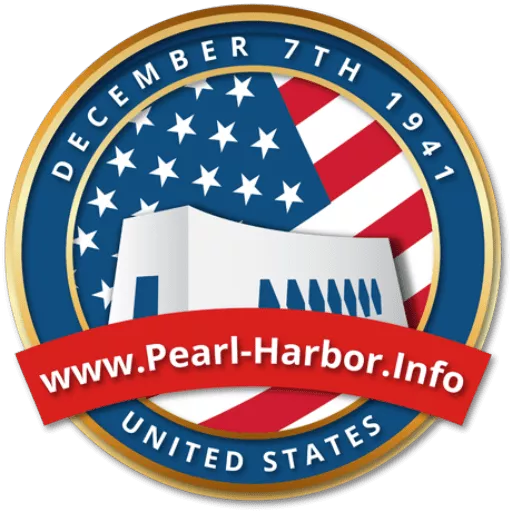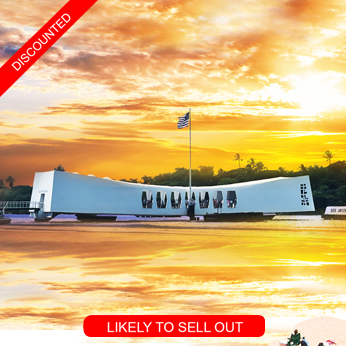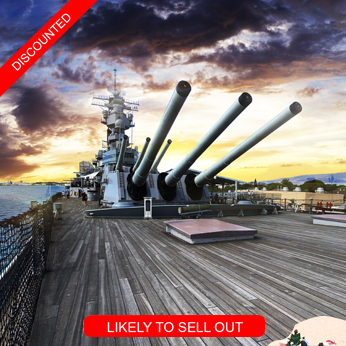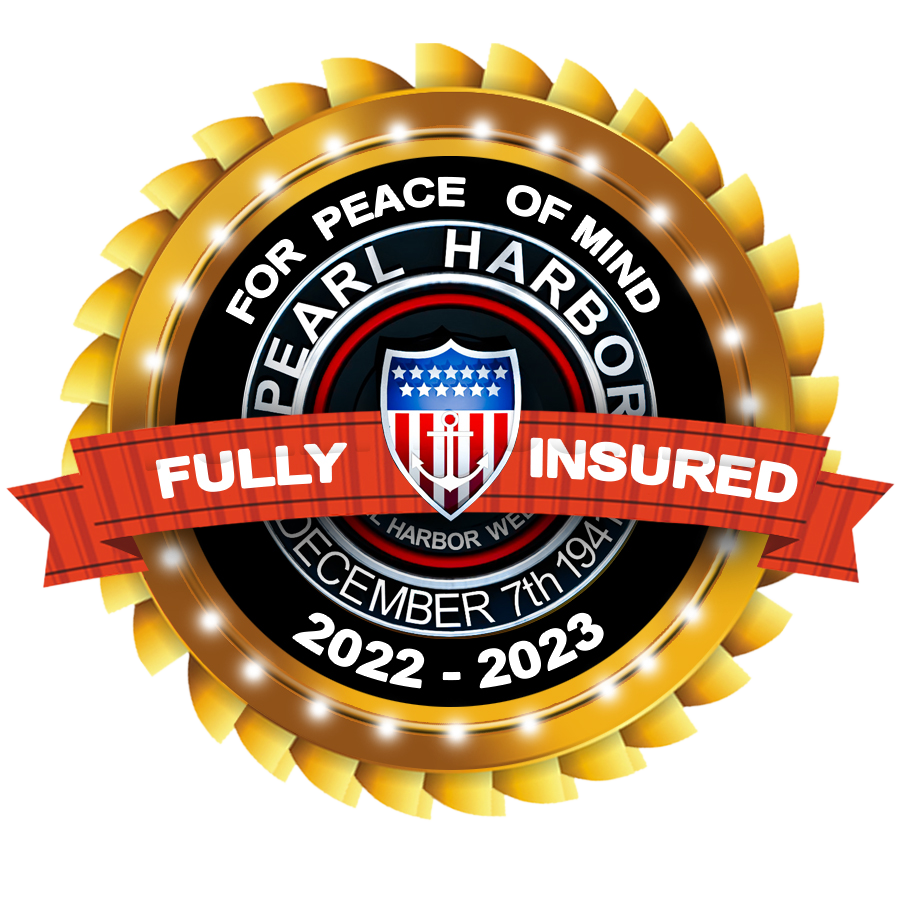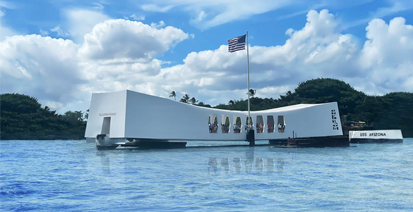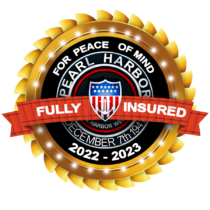Pearl Harbor National Memorial
Pearl Harbor Aviation Museum
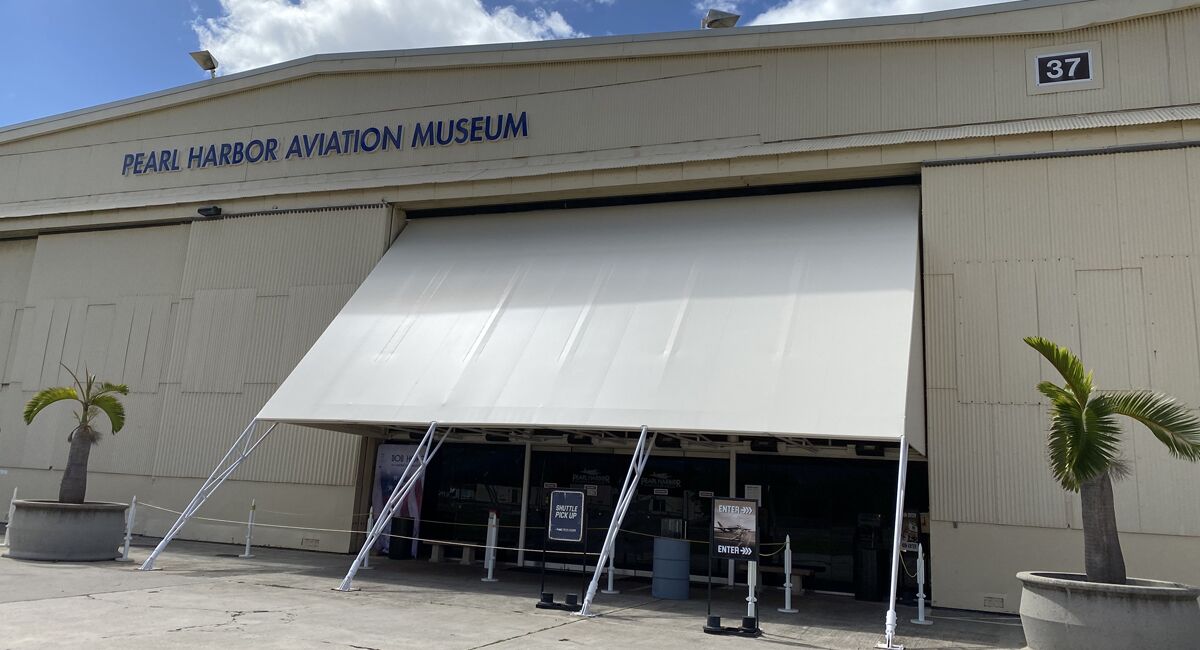
The Pearl Harbor Aviation Museum rests upon a former airbase called Naval Auxiliary Landing Field, Pearl Harbor. Also known as Naval Air Station Pearl Harbor or Luke Field as it was named when the US Army controlled it. The Army left when the aircraft that the Army operated had become too big for Luke Field, and the larger Hickam Field was built. When the Army left, the name Luke Field was removed and given to an Airfield on the Mainland. Thus, the field was named Naval Air Station Ford Island. The Island was also home to a fueling station for Pan American’s China Clippers on their way to Asia. Amelia Earhart also used the field on her visit to Hawaii.
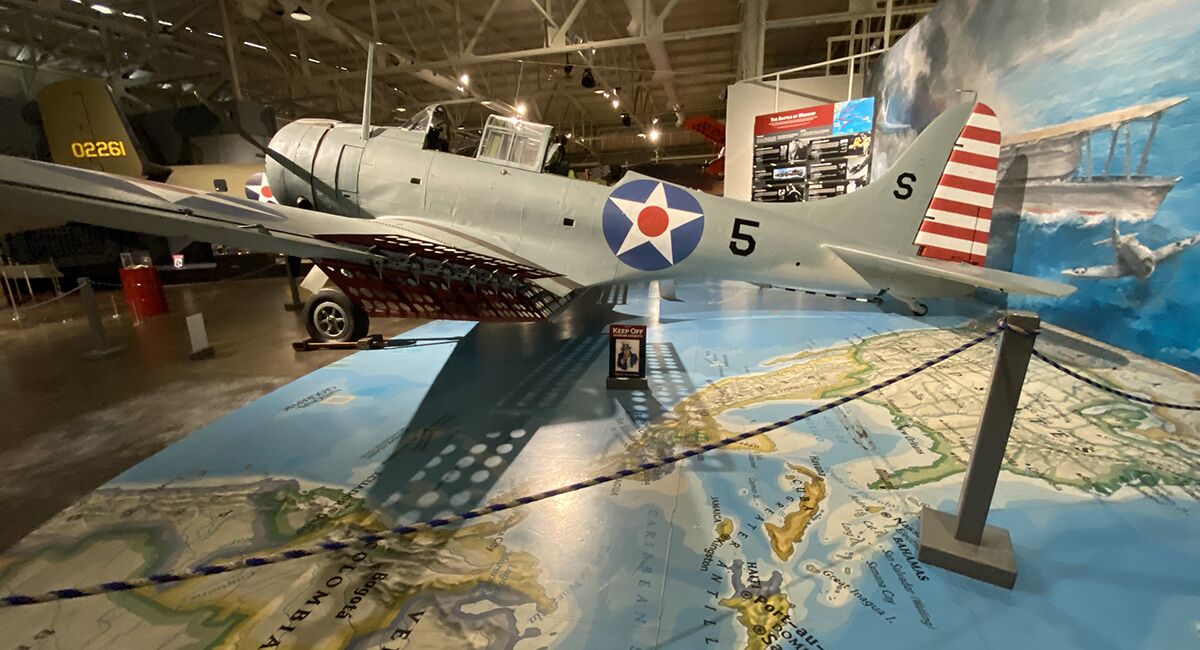
The airfield was hit heavily during the attack on December 7, 1941. The Japanese attacked the airfield targeting the flying boats based there. In addition, bombs meant for the ships of battleship row also fell on the airfield causing damage. In the wake of the attack, aircraft from the USS Enterprise were sent out to search for the Japanese fleet. Unsuccessful, they approached Ford Island in order to land. They were met with fierce gunfire from jumpy anti-aircraft crews, and several aircraft were shot down while attempting to land. With more and larger aircraft arriving in Hawaii on their way west, Naval Air Station Ford Island had become too small and fell to disuse with aircraft being stationed at either Naval Air Station Kaneohe Bay or Naval Air Station Barber’s Point. The Naval Air Station was decommissioned in the 1960s. Then in 1970, the airfield was reopened and designated Naval Auxiliary Landing Field Ford Island. This field was used for civilian flight training and landing practice, as well as military helicopter training. Air operation finally ceased in 1999.
Pearl Harbor Aviation Museum Control Tower
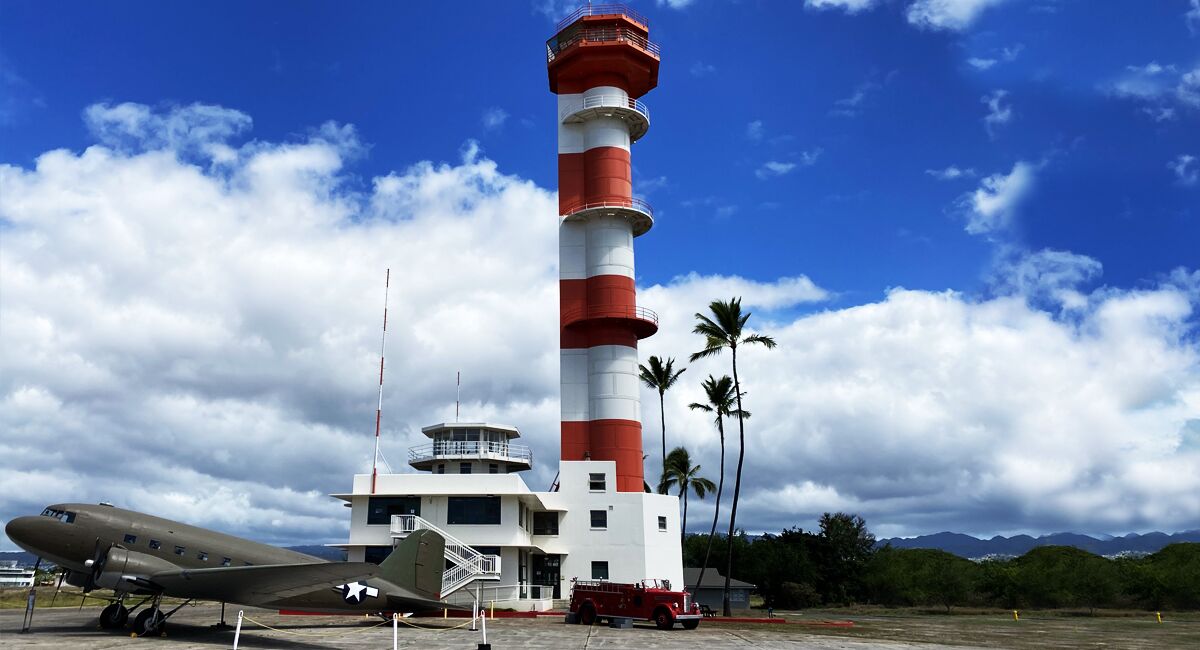
Next to the Pearl Harbor Aviation Museum on Ford Island sits a two-story building with an orange and white striped tower rising 156 feet above the tarmac. This is the most famous landmark on Ford Island. You may pass by it on your way to the Pearl Harbor Aviation Museum if it is included in tour Pearl Harbor Tour. The building is called Building S84, and the tower is the Ford Island air control tower. This historic building is part of the Pearl Harbor Aviation Museum. This historic building was still under construction when the Japanese attacked on December 7, 1941. While not completed, the tower was being used as an air traffic control tower and was shot at by the Japanese. The control tower was operating and directing aircraft throughout the attack and providing direction to aircraft from the USS Enterprise when they arrived at Pearl Harbor in the middle of the attack. The hangars that house the aviation museum were also attacked by Japanese planes. The tower was not always orange and white as it appears today. During WWII, it was painted in a gray camouflage pattern. It was painted in its distinctive bright colors well after the war. In addition to being used for air traffic control, the tower also doubled as a water tower. Building S84 also housed a garage, administrative offices, and aerological facilities in the two-story structure. After WWII, the building has seen many other uses as well, including use as a firehouse, chapel, and training facilities. The building had fallen into disuse by the late 1990s, as had the airfield and hangars. Building S84 has been leased by the US Navy, and restoration work is being done on it. There are plans to allow people to tour the tower in the future. If the tower looks familiar to you, it was featured in the 2001 Michael Bay movie Pearl Harbor.
Pearl Harbor Aviation Museum Hanger 37
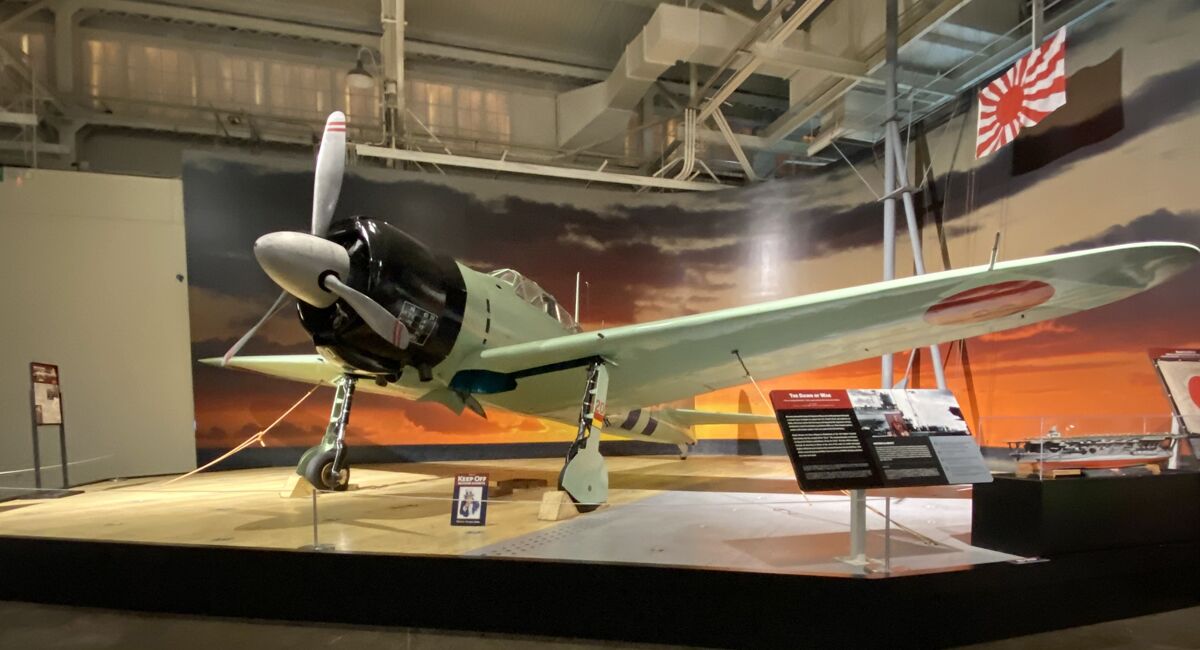
As unique as the Pearl Harbor Aviation Museum is, being the only aviation museum that is also an aerial battlefield, it would not be an aviation museum without the aircraft. As you arrive at the Pearl Harbor Aviation Museum on the shuttle from the Pearl Harbor Visitor Center, the first building you will see is Hangar 37. It houses the admission desk, movie theater, Pearl Harbor Aviation Museum Gift Store, and the Laniakea Cafe. Housed in this hangar are a group of WWII aircraft, including many rare examples. On display in Hangar 37 is the last remaining pieces of the Niihau Zero. The Japanese A6m2 fighter that crash-landed on the Island of Niihau, where the pilot tried to take over the Island in what is known as the Niihau incident. After years of looting for souvenirs and the parts being taken away by the US Government, very little remains of the wreck. If you want to see what the plane looked like in one piece, the Pearl Harbor Aviation Museum has you covered. Hangar 37 houses a restored Mitsubishi A6m2 fighter plane. While this example did not take part in the attack on Pearl Harbor, it is painted in the colors of the Zero that crashed on Niiahu. Standing out in Hangar 37 is the North American B-25B Mitchell bomber. This twin-engine medium bomber was a very successful aircraft in WWII. One of its most famous uses was when a group of 16 B-25 Mitchells made an unprecedented attack on Tokyo after taking off from the aircraft carrier USS Hornet a feat that the bomber was not designed to do. The example in Hangar 37 is a reconstruction made from a later model of B-25 but is painted in the colors of the Doolittle Raiders. Hanging from the ceiling is a replica of a Curtiss P-40 fighter. This one is painted to represent one of the two P-40s that managed to take off and shoot down Japanese aircraft during the attack on Pearl Harbor.
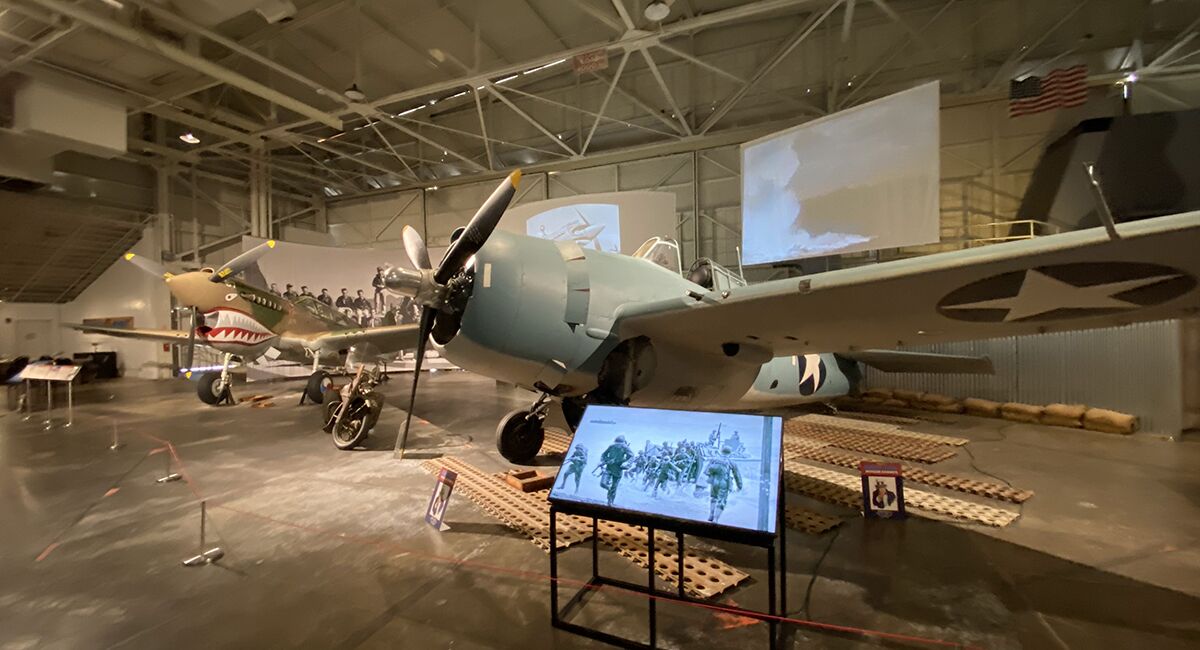
In Hangar 37 sits a relatively rare plane, the Grumman F4F-3 Wildcat. While there are many Wildcats in museums all over the US, most are the later model FM-2 made by General Motors. The F4F-3 was an earlier model, and this one was restored from a plane that was fished out of Lake Michigan, where it had crashed during a training flight. This is one of only two F4F-3s left in the world. The Scout Bomber, Douglas (SBD) Dauntless dive bomber, was the aircraft that took the fight to the Japanese. These aircraft were responsible for the “Five minutes of destiny” when SBDs from the USS Enterprise and USS Yorktown attacked and mortally wounded three of the four Japanese aircraft carriers during the Battle of Midway. Hangar 37 is the temporary home of an SBD-5 on loan to the Pearl Harbor Aviation Museum while its SBD-2P is being restored in Michigan. While it does not have the sleek form of a fighter, the humble Stearman N2S-3 made by Boeing is arguably one of the most important. The bi-plane trainer was the first plane for many pilots before, during, and after WWII. Trainers like this one were used to introduce thousands of trainee pilots to the art of flying. This particular Stearman Kaydet trainer was flown by a young cadet by the name of George H. W. Bush, who would one day become the 41st President of the United States.
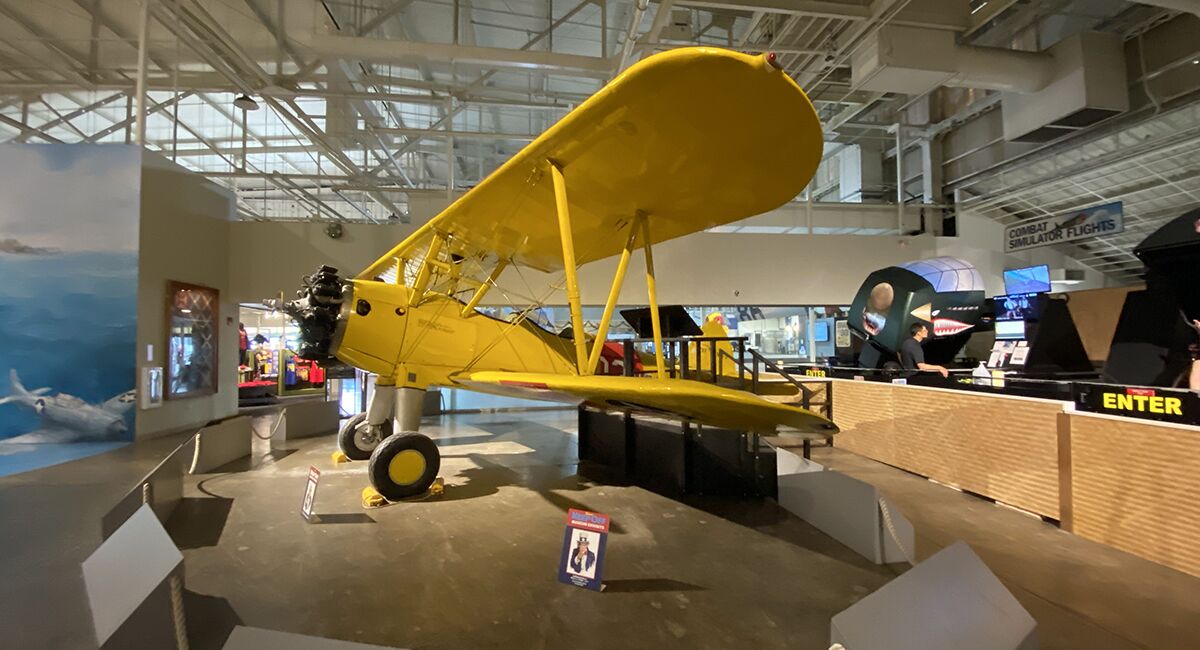
The Aeronca Model 65 TC was a civilian trainer aircraft. This one represents an aircraft that was in the air over Pearl Harbor when the Japanese attack began. Of the eight in the air on that day, Three were shot down by the Japanese. Last on the list of aircraft in Hangar 37 is the Japanese Nakajima B5N carrier torpedo bomber, Allied code name: Kate. These were the main carrier-based torpedo bomber during the early war period. This type of aircraft participated in the attack on Pearl Harbor. In fact, the B5N was responsible for the greatest loss of life in the attack. It was the B5N that dropped the bomb on the Battleship Arizona, causing the massive explosion that destroyed the ship. They also dropped the torpedoes that capsized the Battleship Oklahoma. The B5N at the Pearl Harbor Aviation Museum did not participate in the attack on Pearl Harbor. It is somewhat worse for wear as it had been sitting derelict on an airfield in the Pacific. No matter its condition, this plane is special in that it is one of only two B5N “Kate” torpedo bombers left in the world.
Pearl Harbor Aviation Museum – B -25
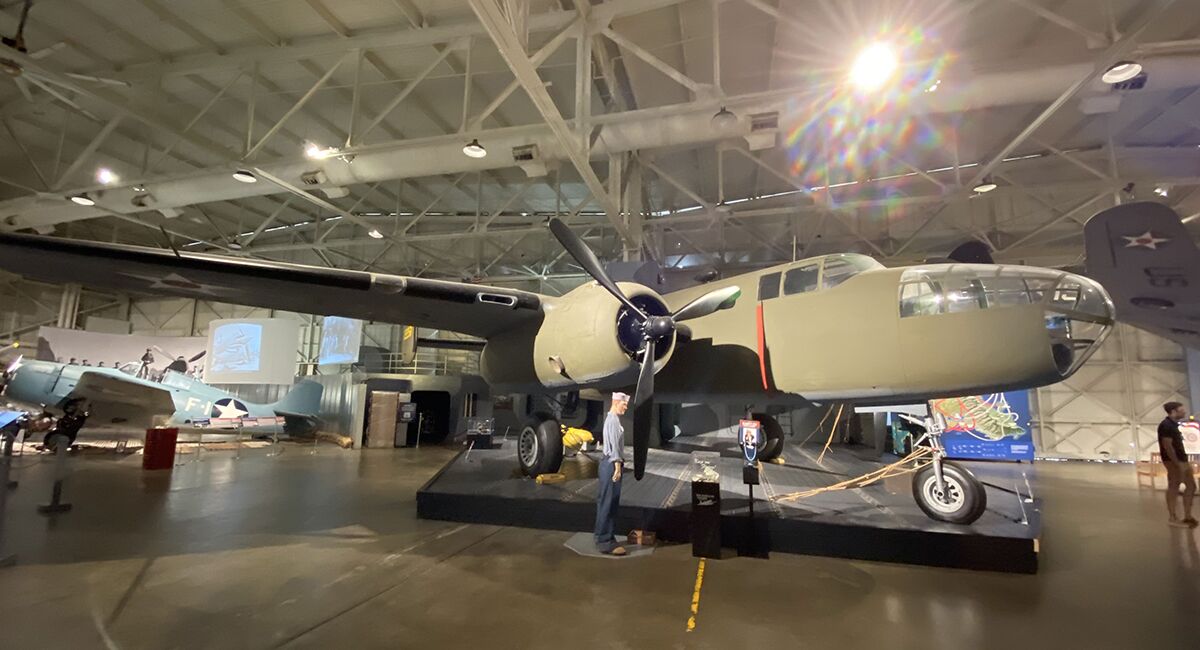
On display in Hangar 37 of the Pearl Harbor Aviation Museum is a B-25 Michell medium bomber. This plane is B-25J which has been modified to represent an earlier model of the Mitchell. This was done to have it represent one of the most daring missions ever attempted in WWII, and it is celebrated even to this day. In the wake of Pearl Harbor, the Imperial Japanese Army and Navy cut a path across the Pacific. The United States and its Allies were suffering loss after loss at the hands of the Japanese. A plan was formulated to attack Japan itself. This would serve to make the Japanese divert resources to defend their home Islands and to give a much needed morale boost to the otherwise demoralized American people. In April of 1942, 16 specially modified B-25 Army medium bombers were loaded onto the aircraft carrier USS Hornet. They, along with an escorting force, were headed for Japan. The B-25s were modified with additional fuel tanks to extend their range. In exchange, most of their guns were taken off. The planes were stripped of anything that was deemed unnecessary. On April 18, 1942, the 16 B-25s under the command of Lt. Col. James Doolittle did what many, especially the Japanese, thought was impossible. The B-25s took off from the USS Hornet bound for Tokyo. The raid, now known as the Doolittle Raid, was conducted under the utmost secrecy. In addition, all 80 men on this mission knew that they would not be returning to the carrier. They did not have the fuel for a round trip, and the planes were incapable of making a carrier landing. They would have to fly on past Japan and hope that they could reach friendly forces in China. The raid caught the Japanese completely unprepared. The raiders had a minimal bomb load, so in the big picture, they did little actual damage. However, the raid totally stunned Japan, who had thought their Islands were beyond the reach of the war. Fifteen of the sixteen raiders ended up crashlanding, ditching, or crashing in China. One B-25 ended up in Russia, where the plane was impounded. Of the 75 that made it to China, three died in action, and eight were captured. The rest managed, with the assistance of Chinese civilians, to get to friendly lines and on the long road home. The Japanese were furious. The Japanese Army launched Operation Sei-go to capture the raiders and to take revenge upon the Chinese who helped them. In the search for Doolittle’s men, the Japanese killed an estimated 10,000 Chinese civilians. Their vengeance-fueled campaign ravaged an area of around 20,000 square miles and hit several towns, including Nancheng, where the Japanese went on an orgy of atrocities comparable to the Rape of Nanking. They tortured to death any who were found to have assisted the Americans and unleashed biological weapons such as anthrax and the plague weaponized by Unit 731, the Japanese Army’s biological weapons lab. In all, around 250,000 Chinese civilians were killed in this campaign. In an episode of karma, around 1,700 Japanese soldiers succumbed to the very same diseases that they unleashed upon the Chinese. This accounted for around 17% of the men assigned to this operation. Of the eight captured men, all were tried and sentenced to death. Three were executed, and five had their death sentence commuted. One died in captivity, and the remaining four spent the rest of the war in a prisoner-of-war camp. After the war, the remains of the dead raiders were repatriated. One raider, Cpl. Harold A. Spatz is buried at the National Memorial Cemetery of the Pacific at Punchbowl crater. The Doolittle Raid lives on as one of the most epic tales in the history of WWII. The US Air Force has recently decided to commemorate the spirit of the Doolittle Raid in the name of their newest and most advanced stealth bomber, the Northrop-Grumman B-21 Raider.
Pearl Harbor Aviation Museum – Hanger 79

There are two buildings that comprise the Pearl Harbor Aviation Museum. The first is Hangar 37, which is the first one where the shuttle from the Pearl Harbor Visitor Center stops. The Second is Hangar 79. Where Hangar 37 is specifically dedicated to WWII-era aircraft, Hangar 79 contains aircraft from more recent times. Hangar 79 has components from a couple of aircraft. The central fuselage from a P-38 and the nose section of a B-52. The P-38 was a successful US Army Air Corps long-range fighter. The P-38 Lightning was the aircraft flown by America’s two top-scoring aces.

Sitting in Hangar 79 is the TBM Avenger torpedo bomber. The Avenger first made its debut during the Battle of Midway, and the Avenger continued to serve as the US Navy’s prime torpedo bomber past the end of the war. The Aviation Museum’s Avenger is painted in the colors of the plane flown by Ensign George H. W. Bush. One of the most important aircraft you will see is the T-6 Texan advanced trainer. The T-6 was the primary advanced trainer for both the US Army Air Corps and US Navy. Another unique plane in the collection at Hangar 79 is the Swamp Ghost. The Swamp Ghost is a B-17E Flying Fortress that crashed in a swamp in the South Pacific and was only recently found. It represents one of the rare examples of the B-17, as the later models are more commonly seen in museums. This is the same model of B-17 that flew into Hickam Field as it was being attacked by Japanese Planes on December 7, 1941. There are many more modern aircraft housed in Hangar 79. From the Mig-15 of Korean War fame all the way to the F-15C, which is still flying with the US Air Force to this day.
Pearl Harbor Aviation Museum Simulator

Imagine this, you have been to Pearl Harbor Visitor Center, caught the shuttle bus to Ford Island, and you have been through the Pearl Harbor Aviation Museum. You are surrounded by historic aircraft and learn about their stats and the exploits of the pilots who flew them. Some of the most iconic planes ever made. Seeing them is one thing, but you want more. The great news is that there is more for you at the Pearl Harbor Aviation Museum. In comes the flight simulator, Fighter Ace 360. This state-of-the-art flight simulator allows you and another passenger to strap into a P-38 Lightning twin-engine fighter and engage in harrowing aerial dogfights across the Islands of the Pacific. The P-38 Lightning is the fighter of aces. Experience flight in the same plane as America’s top aces like Major Richard Bong (40 kills) or Major Thomas McGuire (38 kills). You and an additional passenger will experience dives, banks, and even loops as you engage enemy fighters in aerial duels. The simulators are capable of a range of motion to ensure an exhilarating experience. Both seats control the weapons, but only one controls the flight. You can book it with someone you know or get a premium ticket for a solo flight. Tickets are first come, first served, and there are only 150 tickets available per day. Our experience shows that kids and kids at heart love it. If you have any children with you, then this experience is a must. There is a minimum height requirement of 48 inches for solo flight and 42 inches if accompanied by an adult.
Pearl Harbor Aviation Museum – Raythoen Pavilion

As you peruse the outdoor exhibits at the Pearl Harbor Aviation Museum, you will notice a white tent between Hangar 37 and Hangar 79. This is the Raytheon Pavilion. A place for traveling exhibits of various types sponsored by the Raytheon Company. Raytheon was founded in 1922 as a refrigeration company that later branched out into electronics. Today, Raytheon is a major defense contractor with around 174,000 employees. In 2021, the company was worth $150.62 billion. Raytheon was the first company to develop a missile guidance system that could reliably track a flying target in 1948. They also introduced the first countertop microwave ovens through the Amana Company, which they acquired. Raytheon is a giant in the defense industry. They manufacture radars for planes such as the F-15 Eagle and F-22 Raptor. They are also the producer of missile systems such as Sparrow, Sidewinder, Tomahawk, and Patriot Missiles. Their products have been seen in the 2022 Russo-Ukranian War, such as the Stinger, HARM, and Javelin.
The Raytheon Pavilion at the Pearl Harbor Aviation Museum is a place where national and international traveling exhibits can be experienced through the lens of American history. The exhibits can be about any topic. The current exhibit is called Bob Hope: An American Treasure. This exhibit covers the life and times of actor and comedian Bob Hope, famous for his support of US troops through his USO shows with a career spanning WWII to the Gulf War. One of the previous exhibits was entitled Above and Beyond, an interactive air and space exhibit.
Pearl Harbor Aviation Museum Gift Store

When you get to Pearl Harbor Aviation Museum, please manage your time and leave at least 15-30 minutes of free time to visit their gift store and pick up a few items for your loved one waiting for you back at home. For your brothers and sisters and daughters and sons or your grandchildren. I promise you you will make them so happy and they will love you more. But more importantly, you give them this opportunity to learn about our history, look back, and learn about heroes who saved the country in the past and sacrificed for future generations. Please remember every dollar you spend in the Pearl Harbor Aviation Museum Gift Shop will be going to support Pearl Harbor Aviation Museum.
You will visit Pearl Harbor Aviation Museum in the heart of Ford Island on Oahu Island, next to Pearl Harbor National Memorial and Pearl Harbor Visitor Center. This is the only battleground of WWII, located on United States soil, and was attacked by the Japanese Imperial air force during the Japanese surprise attack on Pearl Harbor on December 7th, 1941. There is a lot to see and hear and learn. But remember, telling a story and showing pictures is not ENOUGH for those waiting to hear from you after you return home. That is why we have great news for you. Pearl Harbor Aviation Museum has and owns one of the most beautiful gift stores in the entire country. This is not just a gift store selling a few items related to the Aviation industry. This is a classy large store with over 1000 gift items related to Pearl Harbor and Pearl Harbor Aviation Museum and Pearl Harbor Attack; well designed in many colors, good quality, and surprisingly very affordable. There is something for everyone in this Pearl Harbor Aviation Museum. From clothing to pens and collections of Mugs and bags and kid’s cloth in beautiful colors and different sizes.
Most Popular Oahu Tours
Best Pearl Harbor Tours – NOW ON SALE

The following tours are recognized as the most popular Pearl Harbor Tours on Oahu. While generally, our price is the lowest in the market now, for a limited time, they are on sale too.
